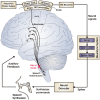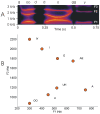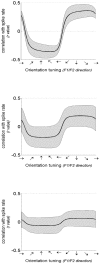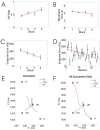A wireless brain-machine interface for real-time speech synthesis
- PMID: 20011034
- PMCID: PMC2784218
- DOI: 10.1371/journal.pone.0008218
A wireless brain-machine interface for real-time speech synthesis
Abstract
Background: Brain-machine interfaces (BMIs) involving electrodes implanted into the human cerebral cortex have recently been developed in an attempt to restore function to profoundly paralyzed individuals. Current BMIs for restoring communication can provide important capabilities via a typing process, but unfortunately they are only capable of slow communication rates. In the current study we use a novel approach to speech restoration in which we decode continuous auditory parameters for a real-time speech synthesizer from neuronal activity in motor cortex during attempted speech.
Methodology/principal findings: Neural signals recorded by a Neurotrophic Electrode implanted in a speech-related region of the left precentral gyrus of a human volunteer suffering from locked-in syndrome, characterized by near-total paralysis with spared cognition, were transmitted wirelessly across the scalp and used to drive a speech synthesizer. A Kalman filter-based decoder translated the neural signals generated during attempted speech into continuous parameters for controlling a synthesizer that provided immediate (within 50 ms) auditory feedback of the decoded sound. Accuracy of the volunteer's vowel productions with the synthesizer improved quickly with practice, with a 25% improvement in average hit rate (from 45% to 70%) and 46% decrease in average endpoint error from the first to the last block of a three-vowel task.
Conclusions/significance: Our results support the feasibility of neural prostheses that may have the potential to provide near-conversational synthetic speech output for individuals with severely impaired speech motor control. They also provide an initial glimpse into the functional properties of neurons in speech motor cortical areas.
Conflict of interest statement
Figures








References
-
- Wolpaw JR, Birbaumer N, McFarland DJ, Pfurtscheller G, Vaughn TM. Brain-computer interfaces for communication and control. Clin Neurophysiol. 2002;113:767–791. - PubMed
-
- Birbaumer N, Ghanayim N, Hinterberger T, Iversen I, Kotchoubey B, et al. A spelling device for the paralysed. Nature. 1999;398:297–298. - PubMed
-
- Birbaumer N, Kubler A, Ghanayim N, Hinterberger T, Perelmouter J, et al. The thought translation device (TTD) for completely paralyzed patients. IEEE Trans Rehabil Eng. 2000;8:190–193. - PubMed
-
- Birbaumer N, Hinterberger T, Kübler A, Neumann N. The thought-translation device (TTD): neurobehavioral mechanisms and clinical outcome. IEEE Trans Neural Syst Rehabil Eng. 2003;11:120–123. - PubMed
-
- Hinterberger T, Kübler A, Kaiser J, Neumann N, Birbaumer N. A brain-computer interface (BCI) for the locked-in: comparison of different EEG classifications for the thought translation device. Clin Neurophysiol. 2003;114:416–425. - PubMed
Publication types
MeSH terms
Grants and funding
LinkOut - more resources
Full Text Sources
Other Literature Sources

